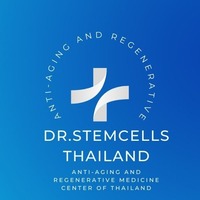Minoxidil (Mnxd)
Minoxidil (Mnxd): Mechanism of Action and Clinical Significance
Overview
Minoxidil (Mnxd) is a topical vasodilator primarily used to treat androgenetic alopecia and other hair loss disorders. Initially developed as an oral antihypertensive, its ability to stimulate hair regrowth has made it a mainstay in dermatologic hair restoration.
Pharmacodynamics
- Prodrug Activation: Minoxidil is converted by the enzyme sulfotransferase in the scalp to minoxidil sulfate, its active form. Variability in sulfotransferase activity among individuals accounts for differential treatment responses.
- Hair Growth Cycle Modulation: It promotes a shortened telogen (resting) phase and an extended anagen (growth) phase, leading to more follicles in active growth, resulting in increased hair density and thickness.
- Potassium Channel Opener: Minoxidil sulfate opens ATP-sensitive potassium channels in vascular smooth muscle surrounding hair follicles, causing vasodilation, increased blood flow, and improved nutrient delivery to hair follicle cells.
- Growth Factor Induction: It upregulates vascular endothelial growth factor (VEGF), hepatocyte growth factor (HGF), and insulin-like growth factor-1 (IGF-1), promoting angiogenesis and follicular proliferation essential to hair regeneration.
- Direct Follicular Effects: Acts as an epidermal growth factor, slowing aging of hair matrix cells and stimulating beta-catenin signaling pathways to maintain follicle growth and size.
- Antifibrotic Effects: Minoxidil inhibits collagen synthesis, reducing fibrosis around hair follicles, which may support follicular longevity.
Clinical Considerations
- Visible improvement in hair growth typically occurs within 8 weeks of consistent use, with maximal effects by 4-6 months. Decreased efficacy or hair loss recurs if treatment is discontinued.
- Efficacy depends heavily on adequate sulfotransferase activity; medications like aspirin may reduce enzyme activity and response.
- Side effects include scalp irritation, transient hair shedding in early treatment, and rare systemic effects like hypotension.
Summary
Minoxidil is a multifaceted agent enhancing hair growth by modulating hair follicle cycling, increasing vascular support, stimulating growth factors, and directly activating follicular cells. Despite incomplete molecular understanding, it remains a frontline therapy for androgenetic alopecia with a well-established safety and efficacy profile.
Consult with Our Team of Experts Now!
For personalized hair loss management using Cellular Therapy and Stem Cells and optimization of minoxidil treatment, consult board-certified dermatologists specializing in hair restoration.
References:
- StatPearls. Minoxidil – Mechanism of Action. 2023.
- ISHRS. Minoxidil: Formulation, Dosage & Side-Effects. 2024.
- British Journal of Dermatology. Minoxidil: Mechanisms of Action on Hair Growth. 2004.
- DrugBank. Minoxidil Pharmacodynamics. 2024.















